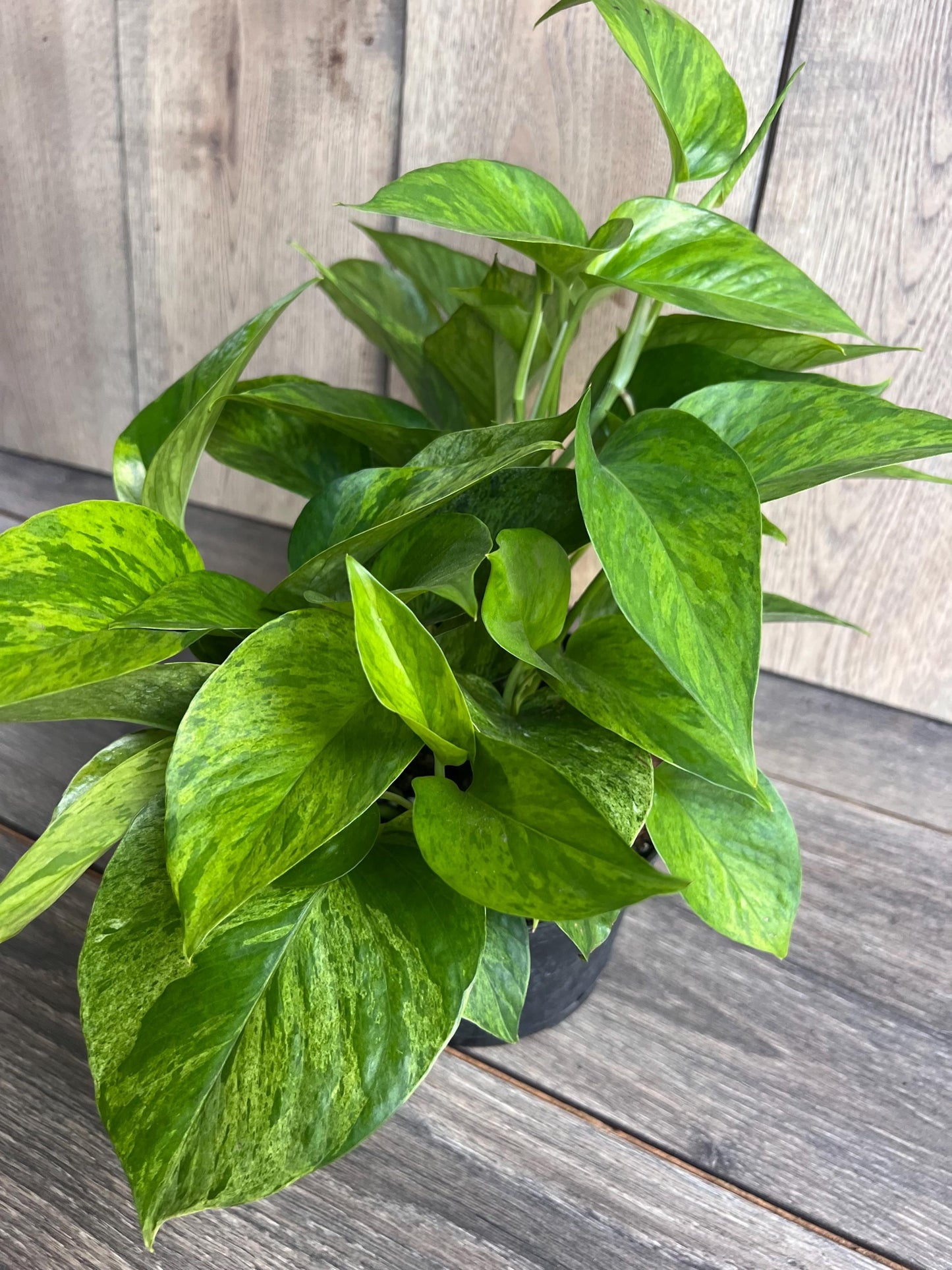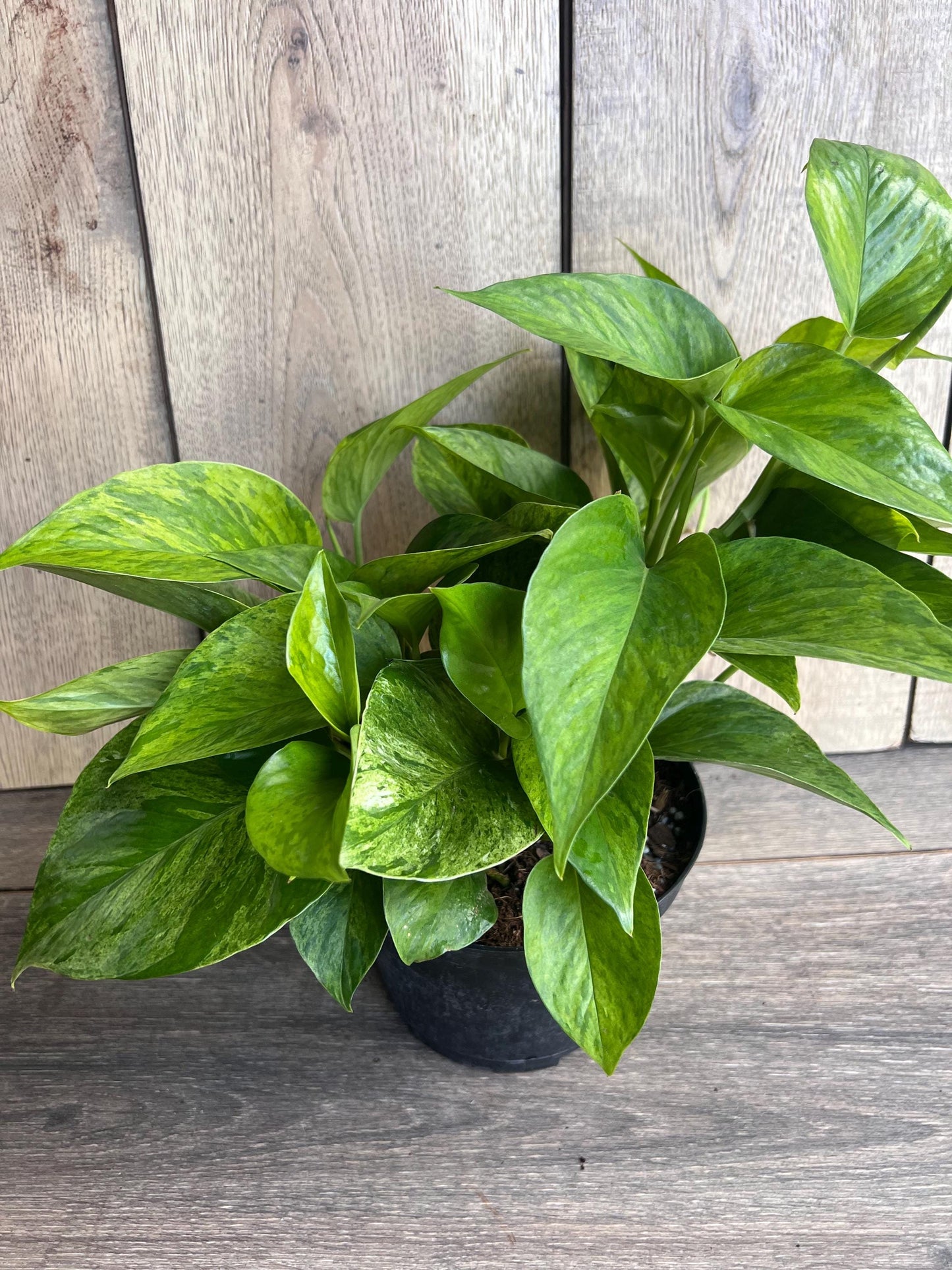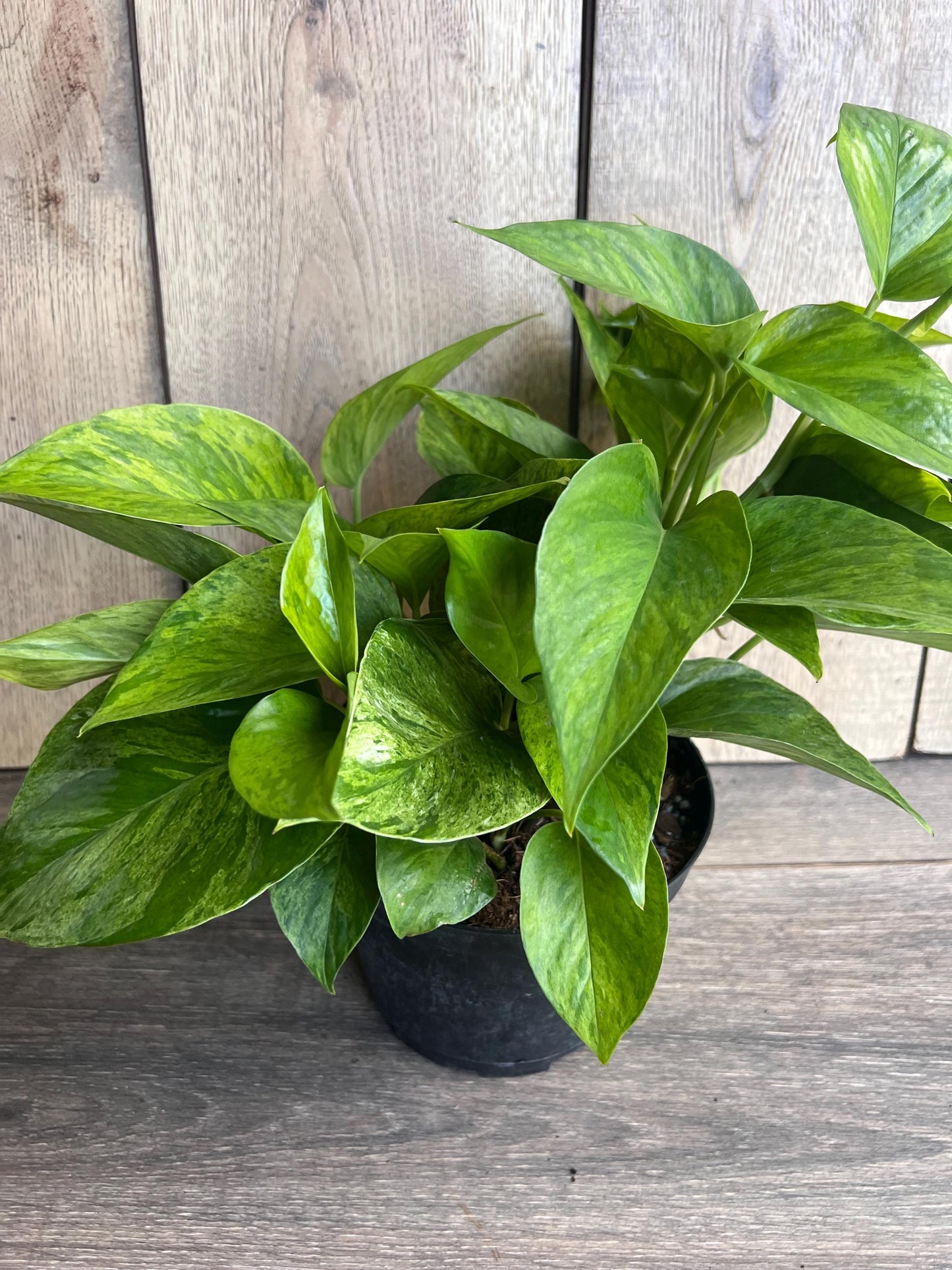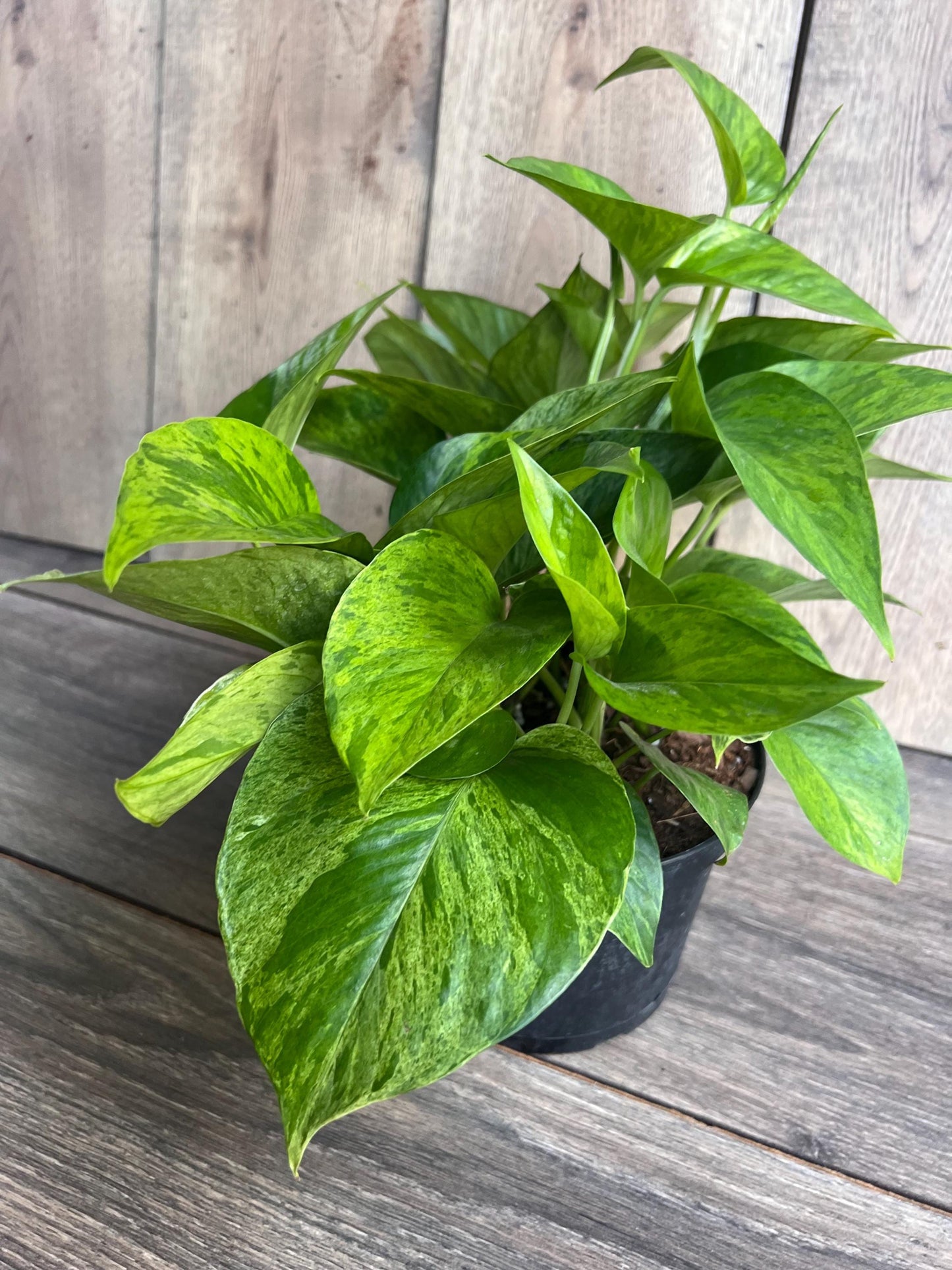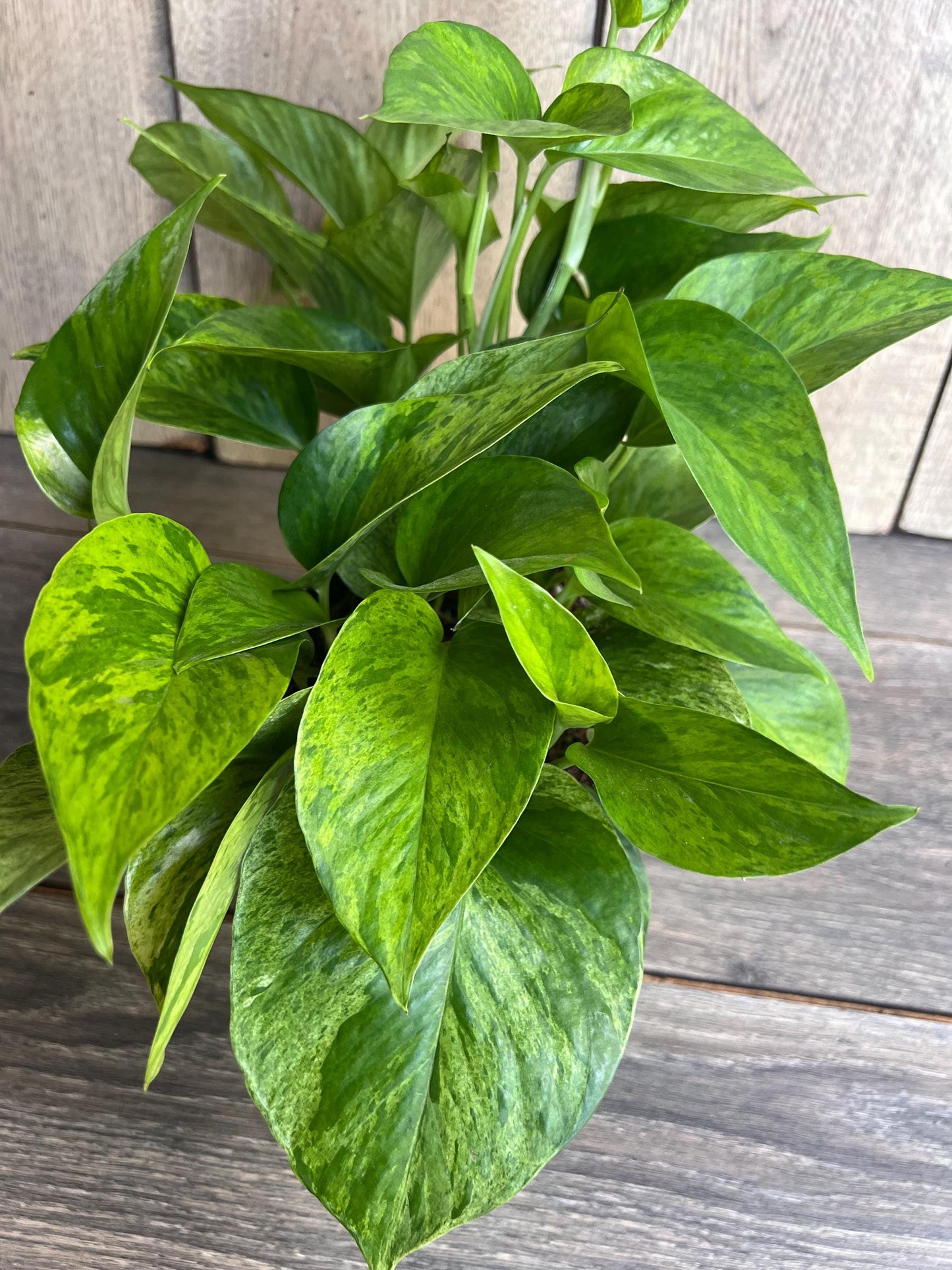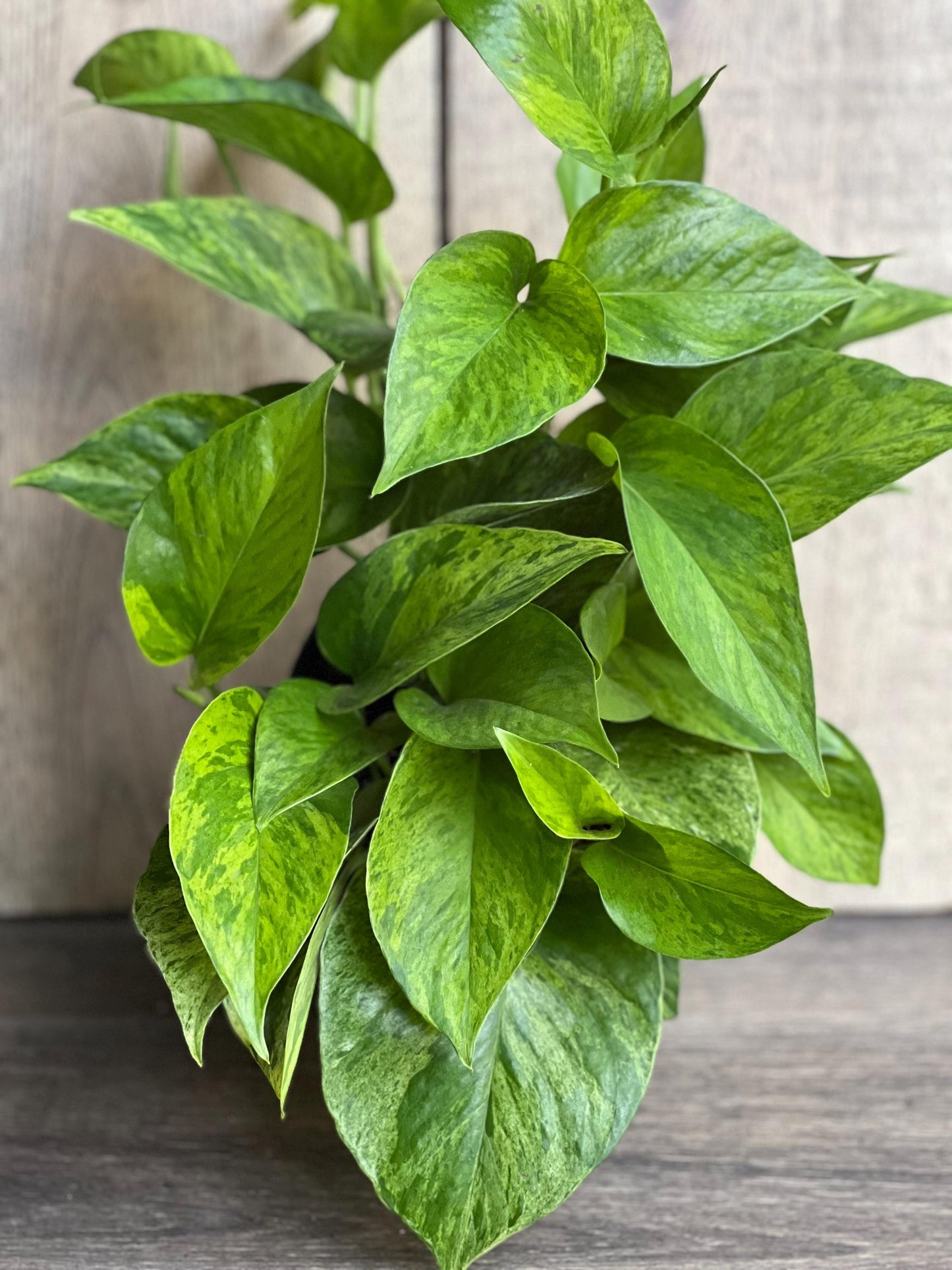1
/
of
6
Jessenia pothos in 6", Epipremnum aureum 'Jessenia
Jessenia pothos in 6", Epipremnum aureum 'Jessenia
Regular price
$32.13 USD
Regular price
$42.84 USD
Sale price
$32.13 USD
Unit price
/
per
Shipping calculated at checkout.
Couldn't load pickup availability
Note: You will receive Jessenia Pothos in 6" pot similar to the pictures
Jessenia Pothos (Epipremnum aureum), also known as Golden Pothos, is a vibrant variety of the popular pothos plant species, prized for its striking green and golden-yellow variegated leaves. The leaves feature a marbled appearance with golden highlights against a dark green background, giving the plant a fresh and lively look. Whether grown as a trailing vine or used in hanging baskets, shelves, or as a climbing plant, Jessenia Pothos adds a pop of color and beauty to any space.
Care Tips for Jessenia Pothos:
1. Light Requirements
- Bright, Indirect Light: Jessenia Pothos thrives in bright, indirect light but can also tolerate low to medium light. The variegation on the leaves becomes more pronounced with brighter light, while in low light, the plant may grow more slowly and show less vibrant coloration.
- Indoor Care: If growing indoors, place the plant near a north- or east-facing window or any spot that gets filtered light. If natural light is insufficient, supplement with grow lights.
2. Watering
- Water When Soil is Dry: Jessenia Pothos is forgiving when it comes to watering, making it ideal for plant beginners. Water the plant when the top 1-2 inches of soil feel dry to the touch. Be careful not to overwater, as this can lead to root rot.
- Avoid Soggy Soil: Ensure the pot has proper drainage to allow excess water to escape. Water thoroughly and allow it to drain out the bottom of the pot.
- Reduce Watering in Winter: During the cooler months, when the plant's growth slows down, reduce watering and allow the soil to dry out more between waterings.
3. Soil Requirements
- Well-Draining Soil: Jessenia Pothos prefers well-draining soil that retains moisture without becoming waterlogged. A standard indoor potting mix works well, but you can improve drainage by mixing in perlite or coconut coir.
- Slightly Acidic to Neutral pH: The plant thrives in soil with a pH of around 6.0 to 7.0 (slightly acidic to neutral).
4. Temperature and Humidity
- Warm Temperatures: Jessenia Pothos prefers temperatures between 60°F to 85°F (15°C to 29°C). Avoid placing it in areas with cold drafts, or near air conditioners or heaters, as temperature fluctuations can stress the plant.
- Humidity: While this pothos can tolerate average humidity levels, it will thrive in moderate to high humidity. If the air in your home is dry, especially during winter, increase humidity by using a humidifier or placing the plant on a humidity tray.
5. Fertilizing
- Feed During Growing Season: During spring and summer, when the plant is actively growing, fertilize Jessenia Pothos once a month with a balanced, water-soluble fertilizer (such as 10-10-10). This promotes healthy growth and vibrant variegation.
- Reduce Fertilizing in Fall/Winter: As the plant enters its slower growth period in fall and winter, reduce fertilizing or stop entirely during this time to prevent nutrient overload.
6. Pruning and Maintenance
- Prune to Control Growth: Jessenia Pothos is a fast-growing vine that benefits from regular pruning. Trim back long or leggy stems to encourage bushier growth and maintain a tidy shape. You can also propagate the cuttings by placing them in water or soil to create new plants.
- Maintain Variegation: If the plant's variegation starts to fade, it may be a sign that it’s not receiving enough light. Moving it to a brighter spot can help restore its vibrant colors.
7. Pests and Diseases
- Common Pests: While Jessenia Pothos is relatively pest-resistant, it may attract spider mites, mealybugs, aphids, and scale insects. Regularly inspect the plant for pests and treat infestations with insecticidal soap or neem oil.
- Leaf Spot: Ensure the plant has good air circulation to prevent fungal diseases like leaf spot or powdery mildew. Avoid overhead watering, as this can increase the likelihood of fungal issues.
8. Support for Climbing
- Trellis or Hanging Basket: Jessenia Pothos can be grown as a trailing vine or climbing plant. If you want to encourage upward growth, provide a trellis, arbor, or another support structure. Alternatively, it can be grown in hanging baskets or pots, where its vines will cascade beautifully.
9. Repotting (For Container-Grown Plants)
- Repot Every 1-2 Years: If your Jessenia Pothos becomes root-bound or outgrows its pot, repot it every 1-2 years into a slightly larger container. Choose a pot that is 1-2 inches larger in diameter than the current one to give the roots room to grow.
- Fresh Soil: When repotting, use fresh, well-draining potting mix and ensure the new pot has proper drainage to prevent waterlogging.
10. Toxicity
- Toxic to Pets: Jessenia Pothos is toxic to pets, particularly cats and dogs. It contains calcium oxalate crystals, which can cause irritation and swelling in the mouth, throat, and digestive tract if ingested. Keep the plant out of reach of pets or consider using pet-safe alternatives if needed.
Share
